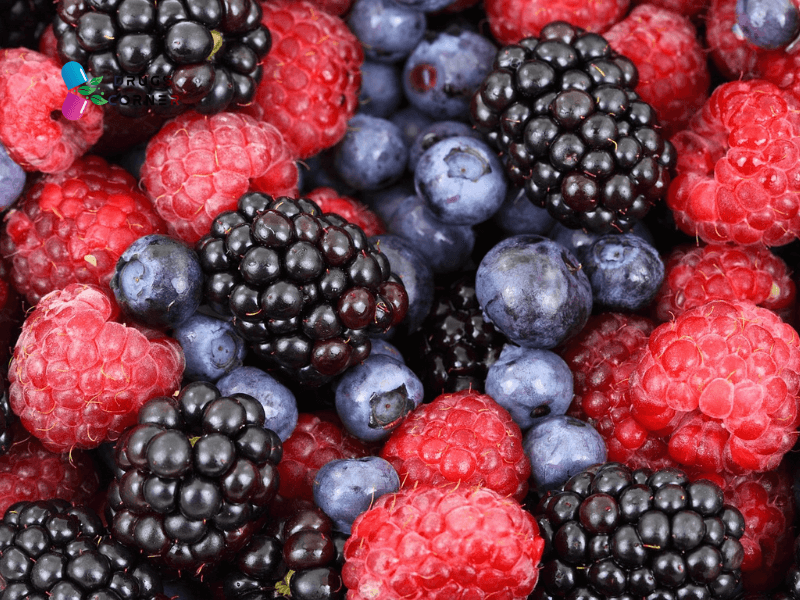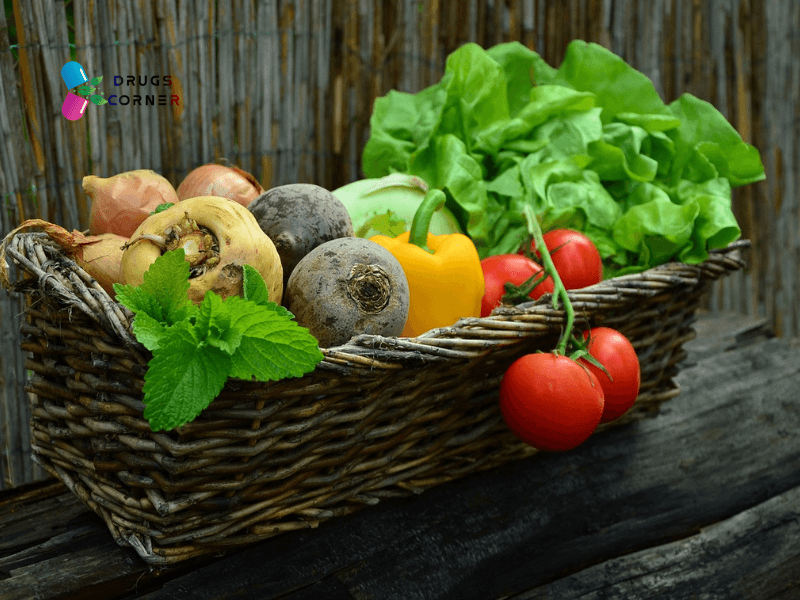What are acidic foods? How they affect the human body? How to avoid the acidic foods and their best alternatives?
These are the trending questions that people are asking in order to keep a healthy body and mind. Before knowing about the acidic foods, we first uncover the topic of acidity.
Acidity refers to the level of acid in a substance, typically measured by its pH level. Acids are substances that donate protons (H+) to a solution, and their concentration in a solution determines its acidity.
The pH scale ranges from 0 (most acidic) to 14 (most basic), with 7 being neutral.
Acidity can be found in many substances, including foods, beverages, and chemicals. Some common examples of acidic substances include citrus fruits, vinegar, and battery acid.
Acidity can also be a characteristic of soil or water, and high acidity can be harmful to plant and animal life.
In the human body, acidity plays an important role in maintaining the pH balance of bodily fluids, including blood.
If the pH level becomes too acidic or too basic, it can cause health problems.
For example, acidosis occurs when the blood becomes too acidic, which can lead to fatigue, confusion, and even coma in severe cases.
What are Acidic Foods?
Acidic foods are those that have a low pH level, meaning they have a high concentration of acid.
Some examples of acidic foods include
Citrus Fruits: Oranges, lemons, limes, grapefruits, and other citrus fruits are highly acidic.
Tomatoes: Tomatoes and tomato-based products such as ketchup and tomato sauce are also acidic.
Berries: Berries like strawberries, raspberries, and blueberries are acidic.
Vinegar: Vinegar, including balsamic, red wine, white wine, and apple cider vinegar, is highly acidic.
Dairy: Some dairy products, such as cheese and yogurt, can be acidic.
Carbonated Beverages: Carbonated beverages, such as soda, can be highly acidic due to the presence of carbonic acid.
It’s worth noting that while these foods are acidic, they can still be part of a healthy diet. Many of these foods, such as citrus fruits and berries, are rich in vitamins, antioxidants, and other nutrients that can benefit your health.
However, people with certain health conditions, such as acid reflux or GERD, may need to limit their intake of acidic foods.
Which Fruits Are Acidic?
There are many fruits which are acidic in nature. Many fruits are naturally acidic due to the presence of various acids such as citric acid, malic acid, and tartaric acid.
Some of the most acidic fruits include:
Citrus Fruits: Oranges, lemons, limes, grapefruits, and other citrus fruits are highly acidic due to their high content of citric acid.
Berries: Berries like strawberries, raspberries, and blueberries are also acidic due to the presence of malic acid.
Pineapple: Pineapple is a tropical fruit that is high in bromelain and citric acid, making it a very acidic fruit.

Pomegranate: Pomegranates are also acidic due to the presence of tartaric acid.
Grapes: Grapes, particularly green grapes, are acidic due to the presence of tartaric acid.
Apples: Apples are slightly acidic due to the presence of malic acid.
It’s worth noting that while these fruits are acidic, they can still be part of a healthy diet.
Many of these fruits are rich in vitamins, antioxidants, and other nutrients that can benefit your health.
However, people with certain health conditions, such as acid reflux or GERD, may need to limit their intake of acidic fruits.
Which Vegetables Are Acidic in Nature?
Just like the acidic fruits there are vegetables, in general, are not as acidic as fruits, but some vegetables do contain natural acids that give them a slightly acidic taste.
Here are some examples of vegetables that are slightly acidic:
Tomatoes: Tomatoes are one of the most acidic vegetables, with a pH range of 4.3 to 4.9 due to their high content of citric acid.
Corn: Corn is slightly acidic with a pH range of 5.9 to 7.5.
Pickles: Pickled vegetables like cucumbers, beets, and onions are acidic due to the addition of vinegar in the pickling process.

Asparagus: Asparagus is slightly acidic with a pH range of 6.0 to 6.5.
Artichokes: Artichokes are slightly acidic with a pH range of 5.5 to 6.5.
Brussels Sprouts: Brussels sprouts are slightly acidic with a pH range of 6.0 to 7.5.
It’s worth noting that most vegetables have an alkaline effect on the body, meaning they can help to neutralize acids in the body. In general, a diet rich in vegetables is considered healthy and can provide many essential vitamins, minerals, and antioxidants.
Which Liquids Are Acidic?
To start with the liquids, many liquids can be acidic, with a pH level of less than 7.0 on the pH scale.
Here are some examples of liquids that are acidic:
Fruit Juices: Many fruit juices, such as orange juice, lemon juice, and grapefruit juice, are acidic due to the high concentration of citric acid.
Soft Drinks: Soft drinks like cola, lemon-lime soda, and sports drinks are acidic due to the presence of phosphoric acid and other acids.

Wine: Wine is acidic due to the presence of tartaric acid.
Coffee and Tea: Coffee and tea are acidic due to the presence of chlorogenic acid and tannins.
Vinegar: Vinegar, including balsamic, red wine, white wine, and apple cider vinegar, is highly acidic.
Beer: Beer is generally slightly acidic due to the presence of carbonic acid and other acids.
It’s worth noting that some liquids, such as water, milk, and some herbal teas, are neutral or slightly alkaline, with a pH level of 7.0 or higher on the pH scale.
Is Acidic Food Harmful to Human Body?
This is an important question related to the mental and physical health. Acidic foods are not inherently harmful to the human body, and in fact, many of them can be part of a healthy and balanced diet.
However, consuming excessive amounts of acidic foods or having a diet that is consistently high in acidic foods may have negative effects on health.
Here are some potential effects of consuming excessive amounts of acidic foods:
Dental Erosion: Acidic foods and drinks can erode the enamel on teeth, leading to tooth decay and sensitivity.
Acid Reflux and GERD: Acidic foods can trigger acid reflux and gastroesophageal reflux disease (GERD), causing symptoms such as heartburn, chest pain, and difficulty swallowing.
Bone Health: Some research suggests that a diet high in acidic foods may contribute to the development of osteoporosis, a condition in which bones become weak and brittle.
Kidney Health: A diet high in acidic foods may increase the risk of kidney stones, a painful condition in which minerals and salts form solid crystals in the kidneys.
Inflammation: Some research suggests that a diet high in acidic foods may increase inflammation in the body, which has been linked to a range of health issues, including heart disease, diabetes, and cancer.
Overall, it’s important to consume a balanced diet that includes a variety of foods, including both acidic and alkaline foods.
We suggest if you have any health issues, it is better to consult with a Doctor of Nutrition or your healthcare consultant.
How to Avoid Acidic Food?
Avoiding acidic foods completely is not necessary or even recommended, as many acidic foods can be nutritious and important for a balanced diet.
However, if you are experiencing acid reflux, heartburn, or other digestive issues, reducing your intake of acidic foods may help to alleviate symptoms.
Here are some tips for avoiding or reducing your intake of acidic foods:
Know which Foods are Acidic: Learn which foods are acidic and which are less acidic or alkaline. Some examples of acidic foods include citrus fruits, tomatoes, spicy foods, coffee, and alcohol.
Keep a Food Diary: Keeping a food diary can help you track which foods trigger your symptoms, and can help you make adjustments to your diet accordingly.
Eat Smaller, More Frequent Meals: Eating smaller, more frequent meals throughout the day can help to prevent acid reflux and other digestive issues.
Avoid Eating Late at Night: Eating late at night can increase the likelihood of acid reflux and other digestive issues, so it’s best to avoid eating within two to three hours of bedtime.
Choose Less Acidic Alternatives: When possible, choose less acidic alternatives to your favorite foods. For example, instead of tomato-based pasta sauce, try a pesto or cream-based sauce.
Manage Stress: Stress can also contribute to digestive issues, so finding ways to manage stress, like practicing yoga or meditation, can be helpful.
Remember, it’s important to maintain a balanced and varied diet, and avoiding all acidic foods is not necessary or recommended. Consult with a healthcare professional if you have ongoing digestive issues or concerns about your diet.
Effects of Acidic Foods on the Human Body?
There is no specific answer to this question. So, consuming acidic foods can have both positive and negative effects on the human body.
Here are some potential effects of acidic foods:
Positive effects:
Improved Digestion: Acidic foods like citrus fruits, vinegar, and fermented foods can promote healthy digestion by increasing the production of digestive enzymes.
Antioxidant Properties: Some acidic foods like berries and citrus fruits are high in antioxidants, which can protect the body against damage from harmful molecules known as free radicals.
Nutritional Benefits: Many acidic foods like tomatoes, lemons, and grapefruit are high in vitamins, minerals, and other important nutrients.
Negative effects:
Acid Reflux: Acidic foods can trigger acid reflux, heartburn, and other digestive issues in some individuals.
Tooth Decay: Consuming acidic foods and drinks can erode tooth enamel over time, leading to tooth decay and sensitivity.
Bone Health: A diet high in acidic foods can contribute to the loss of calcium from bones, which can increase the risk of osteoporosis.
Inflammation: Some research suggests that a diet high in acidic foods may contribute to chronic inflammation, which is associated with a variety of health issues including heart disease, diabetes, and cancer.
It’s important to remember that the effects of acidic foods on the body can vary depending on the individual and their overall diet and lifestyle.
Consuming a balanced and varied diet that includes a mix of acidic and alkaline foods is generally recommended for optimal health.
Best Alternatives of Acidic Foods in Summer
During the summer months, it’s especially important to stay hydrated and maintain a balanced diet that includes foods that are less acidic or alkaline.
Here are some examples of foods that can be good alternatives to acidic foods in the summer:
Watermelon: Watermelon is a delicious and refreshing fruit that is alkaline and high in hydration.
Cucumbers: Cucumbers are alkaline and a great source of hydration, and can be added to salads or eaten as a snack.
Leafy Greens: Leafy greens like lettuce, arugula, and kale are alkaline and can be used as a base for salads or smoothies.

Coconut Water: Coconut water is alkaline and a great source of hydration, and can be a healthy alternative to sugary sports drinks.
Grilled Vegetables: Grilling vegetables like zucchini, eggplant, and bell peppers can be a flavorful and alkaline addition to summer meals.
Herbal Teas: Herbal teas like peppermint, chamomile, and hibiscus are alkaline and can be a refreshing and hydrating alternative to sugary drinks.
In addition to incorporating these foods into your summer diet, it’s important to stay hydrated by drinking plenty of water and avoiding sugary and caffeinated beverages.
It’s also a good idea to limit your intake of processed and packaged foods, which can be high in acids and sodium.
Best Alternatives of Acidic Foods in Winter
During the winter months, it’s important to maintain a healthy and balanced diet that includes foods that are less acidic or alkaline.
Here are some examples of foods that can be good alternatives to acidic foods in the winter:
Root Vegetables: Root vegetables like sweet potatoes, carrots, and turnips are alkaline and provide important nutrients like fiber, vitamins, and minerals.
Winter Squash: Winter squash like butternut squash and acorn squash are alkaline and can be used in a variety of dishes like soups, stews, and roasted vegetable medleys.
Citrus Fruits: While citrus fruits are acidic, they are also high in vitamin C, which can be beneficial during the winter months. Examples include oranges, grapefruits, and lemons.
Mushrooms: Mushrooms are alkaline and a great source of protein, fiber, and important minerals like selenium and potassium.
Whole Grains: Whole grains like quinoa, brown rice, and whole wheat pasta are alkaline and provide important nutrients like fiber, vitamins, and minerals.
Herbal Teas: Herbal teas like ginger, chamomile, and peppermint can be soothing and hydrating during the winter months, and are alkaline.
It’s also important to stay hydrated during the winter months, as the air tends to be drier and can dehydrate the body.
Drinking plenty of water, and herbal teas, and consuming hydrating foods like soups and stews can help to keep you hydrated and feeling your best.
Additionally, limiting your intake of processed foods, sugary treats, and alcohol can also be beneficial for maintaining a healthy balance in the body.
For more information, visit drugscorner.com





